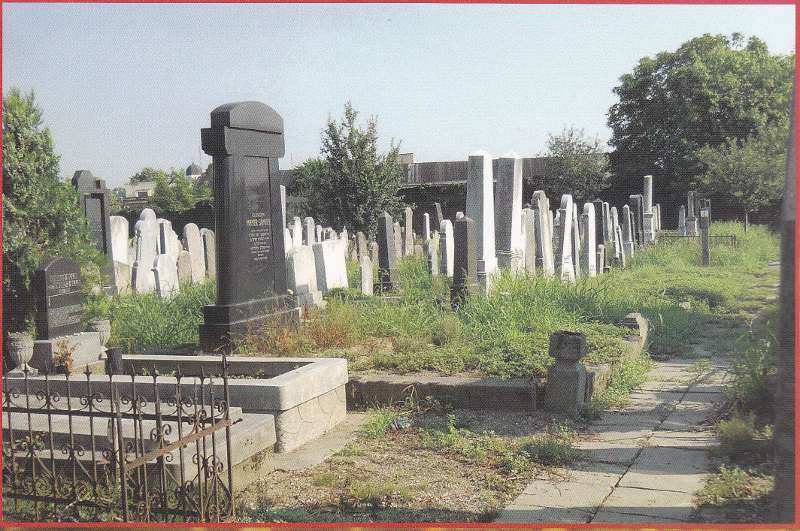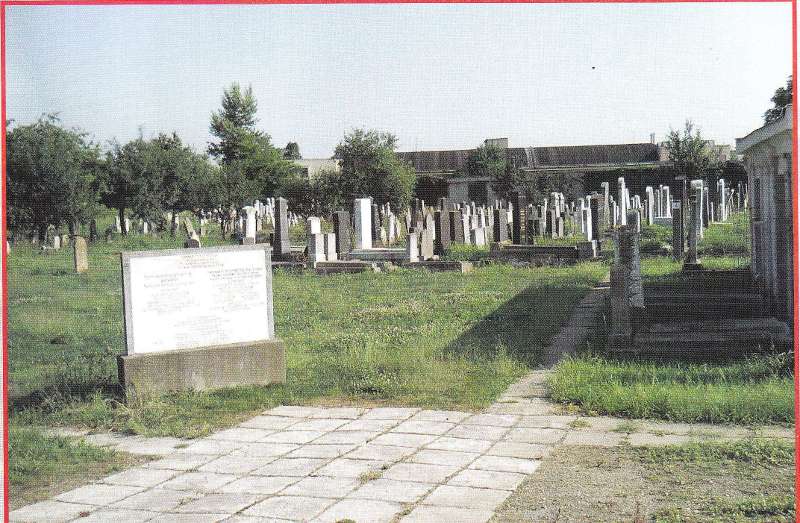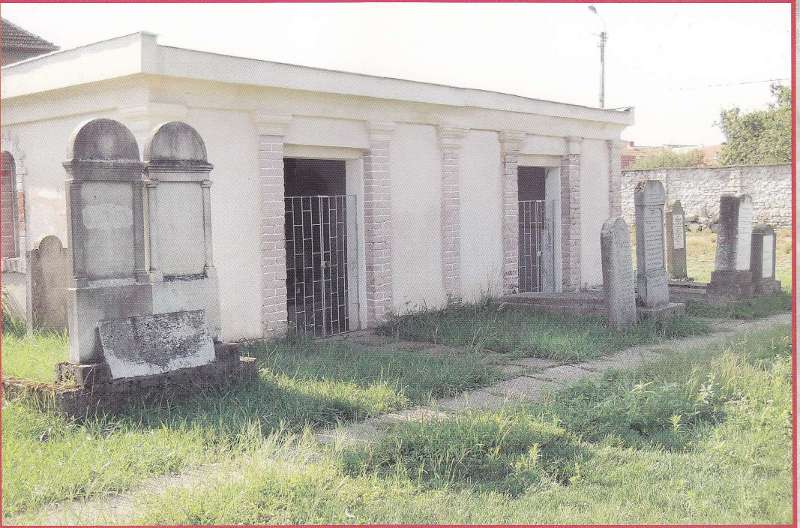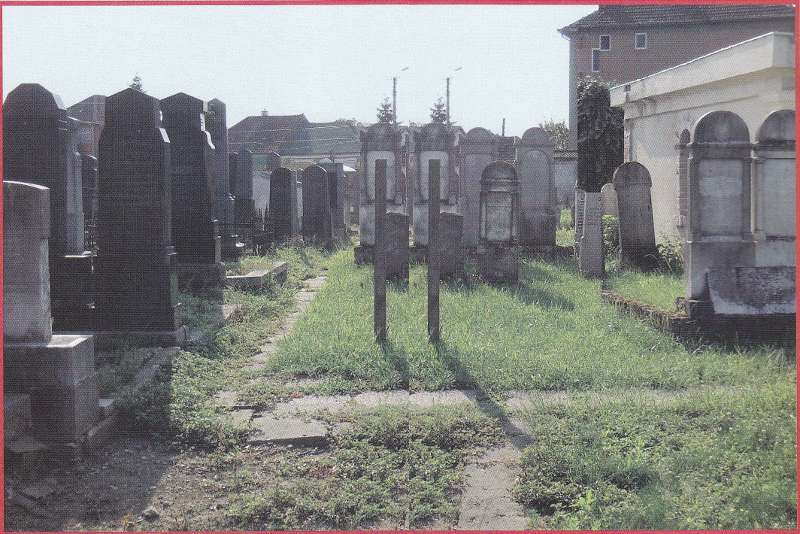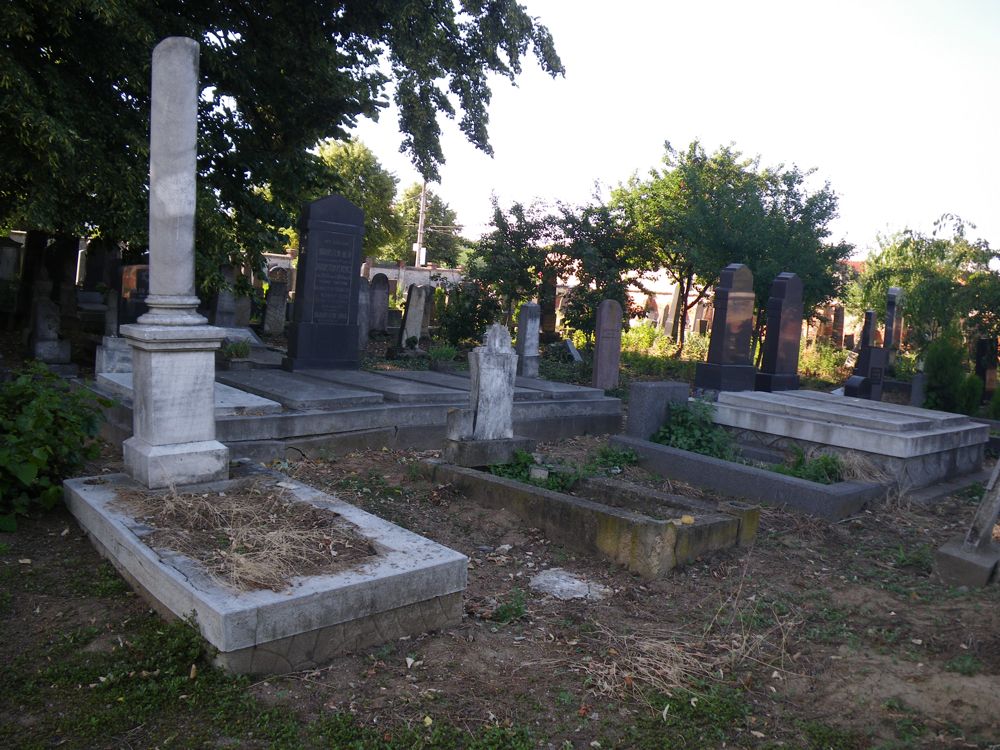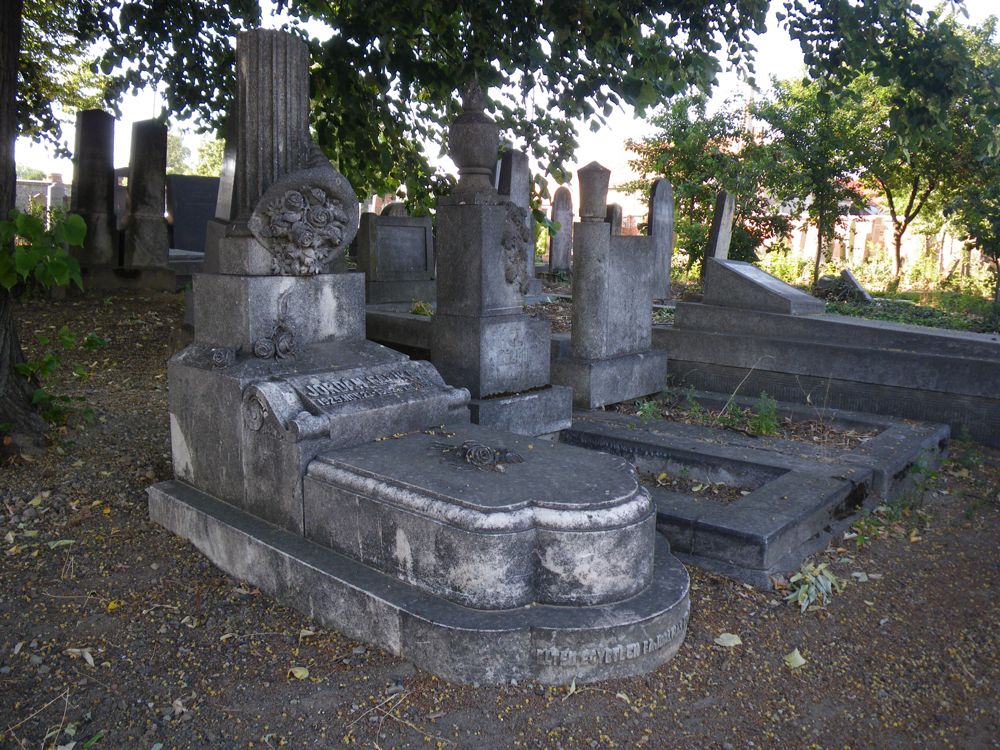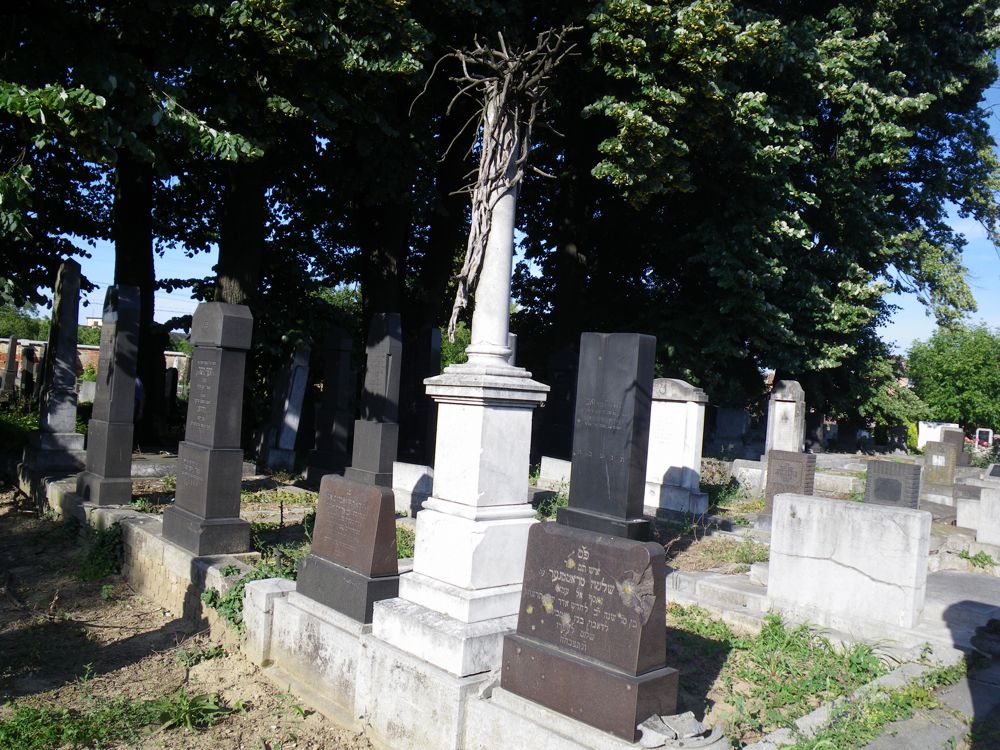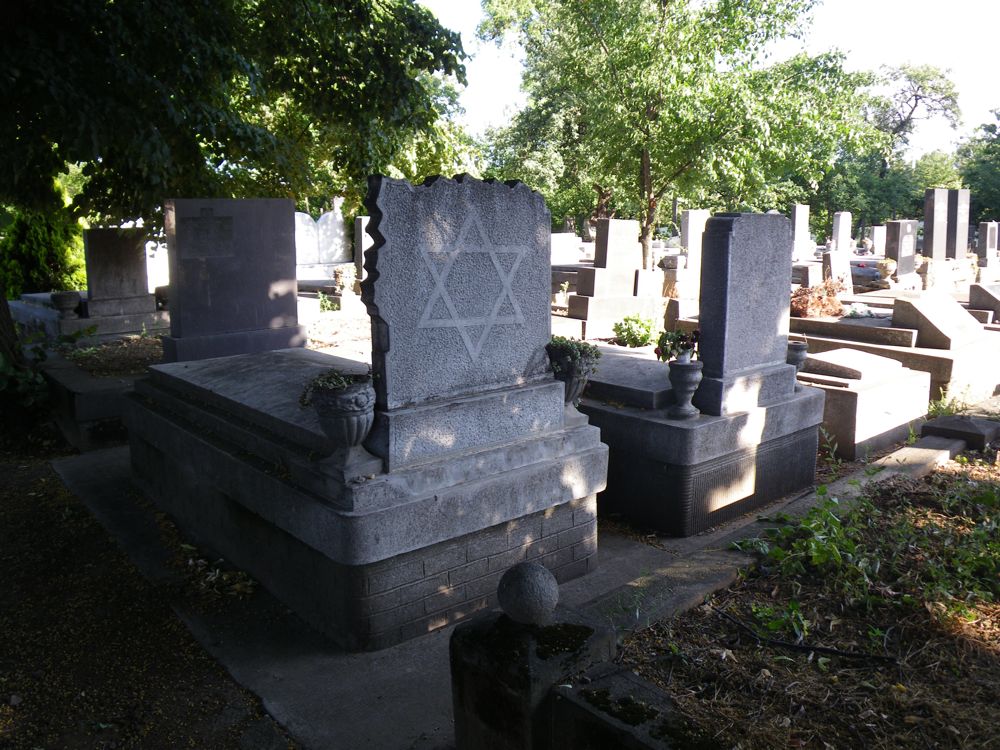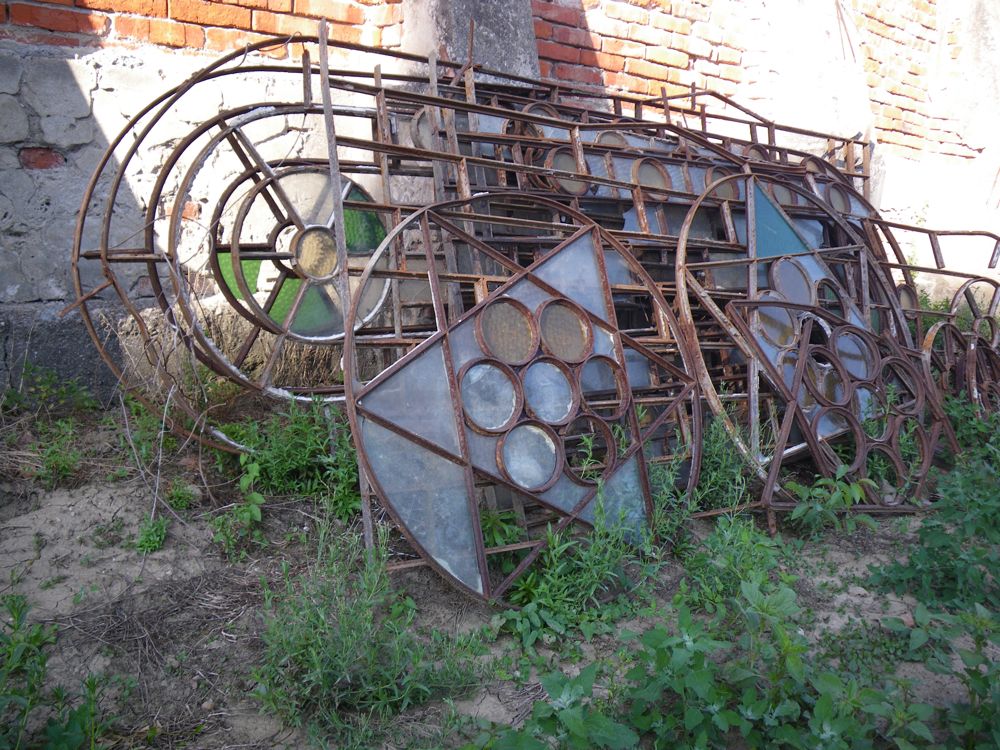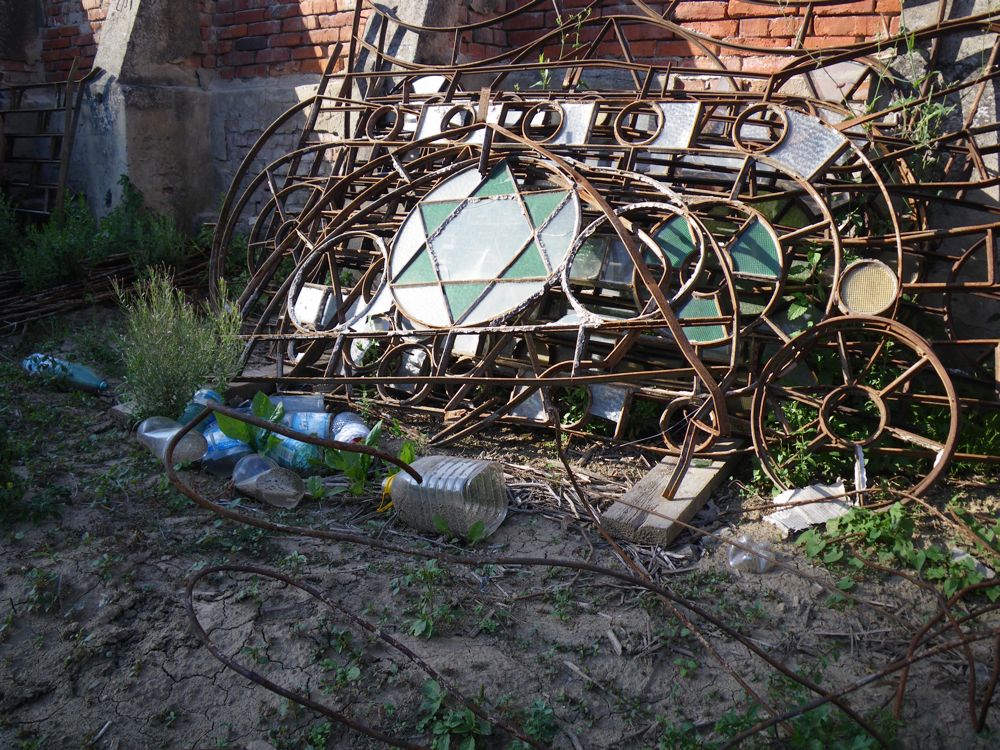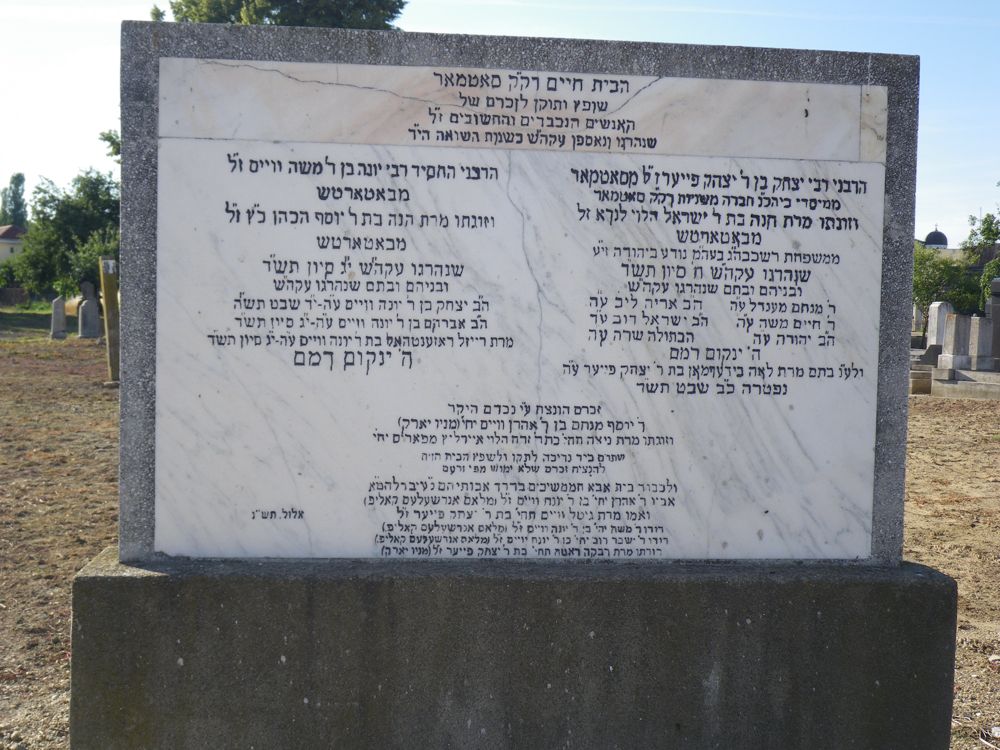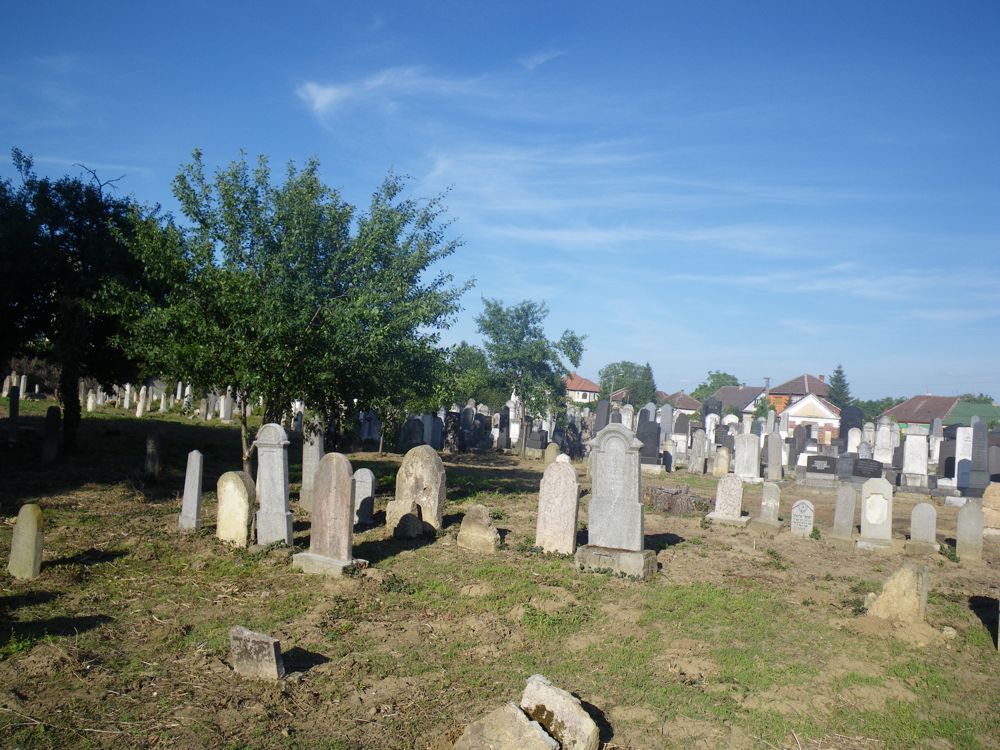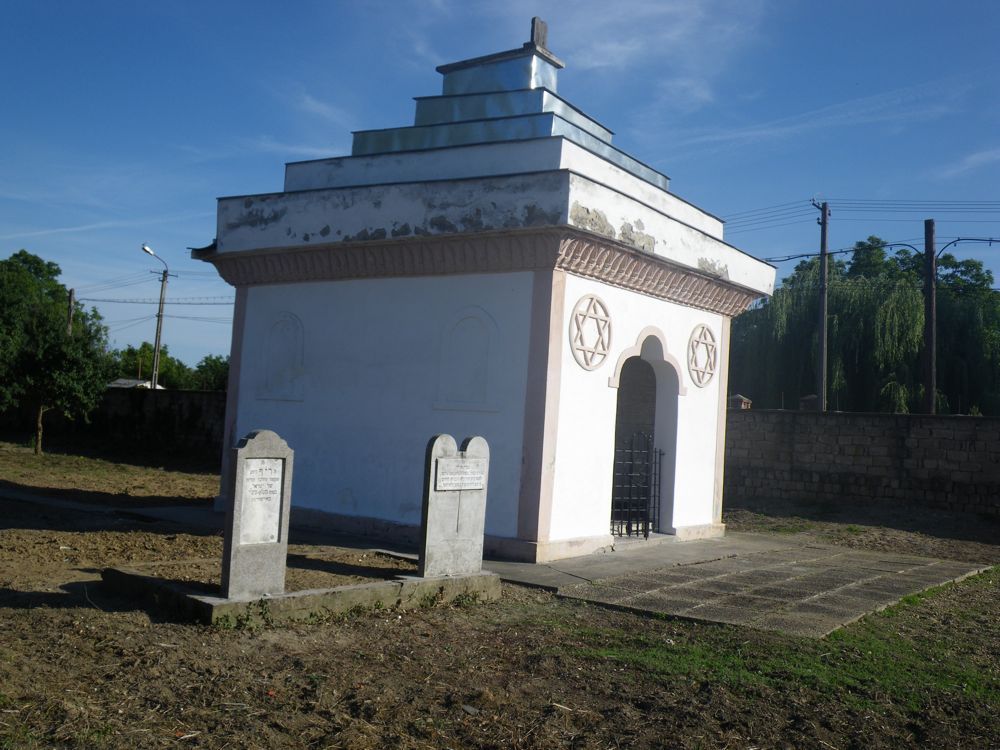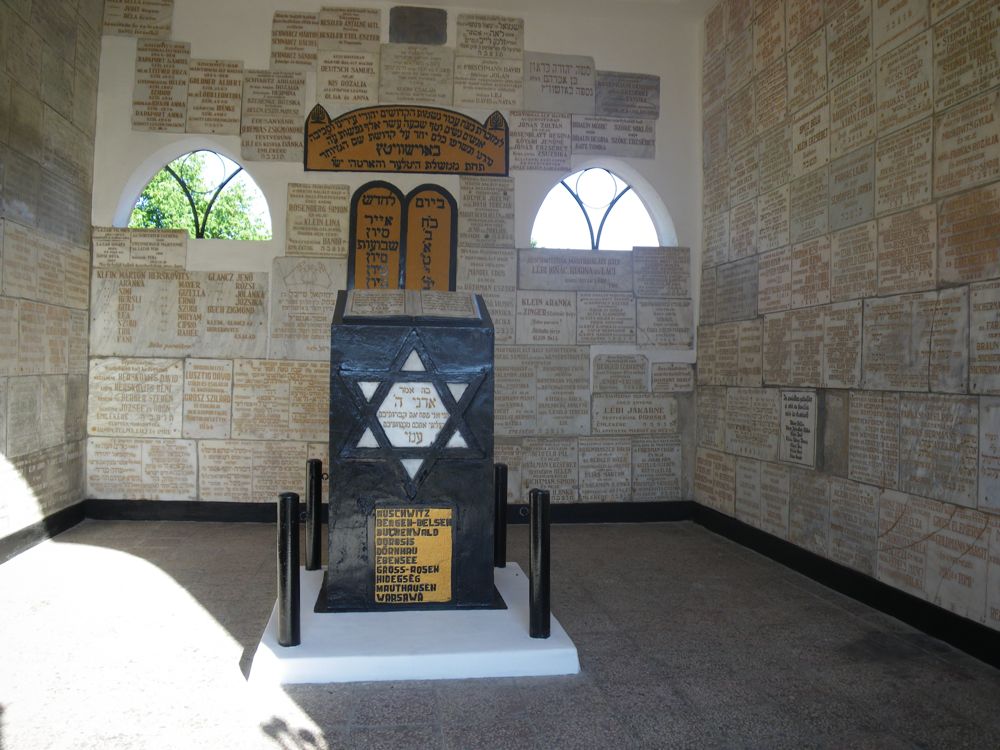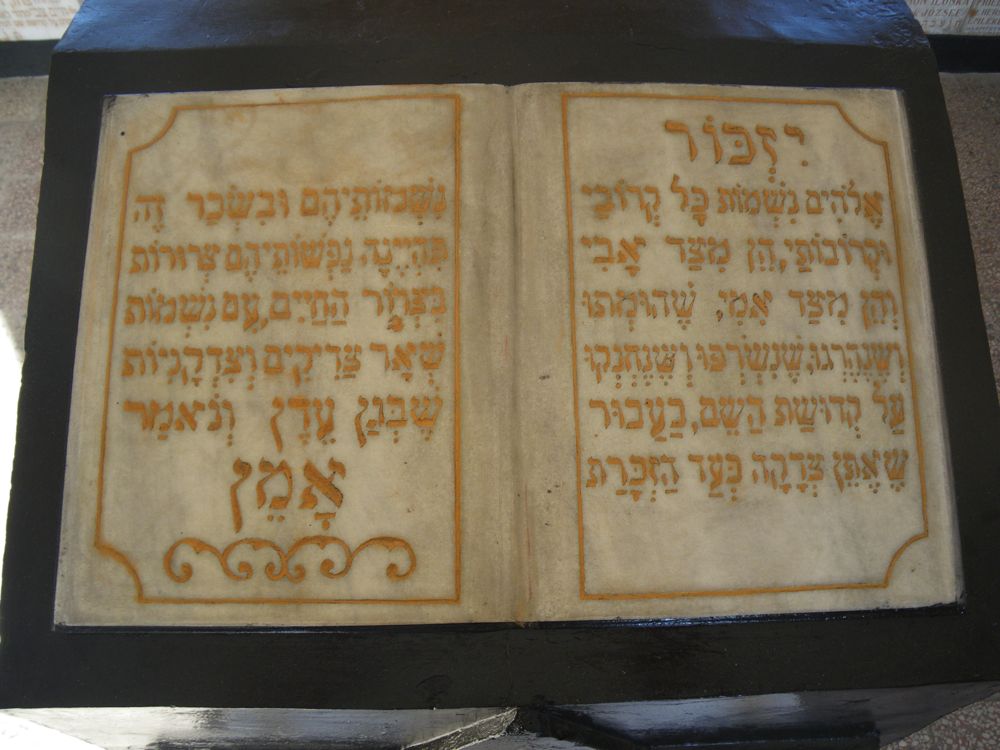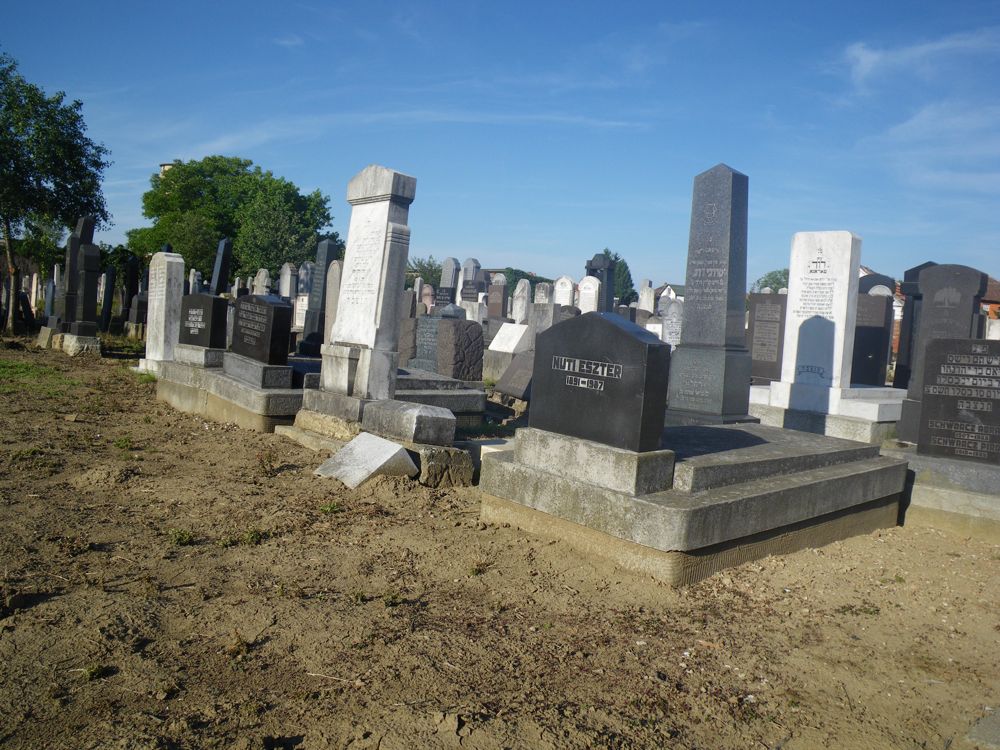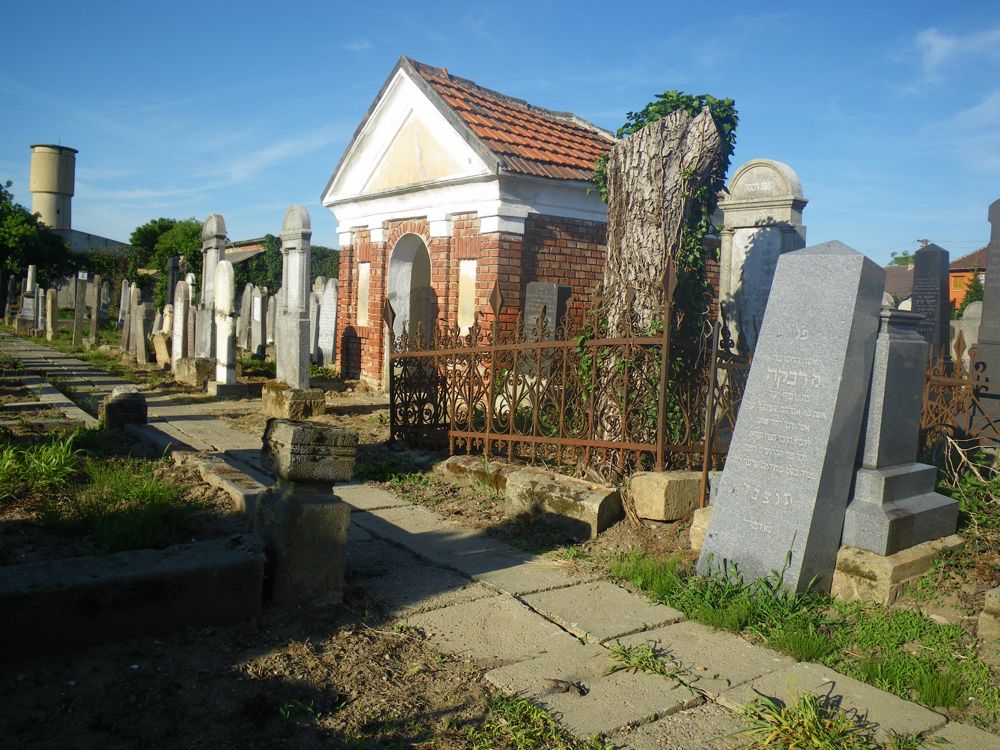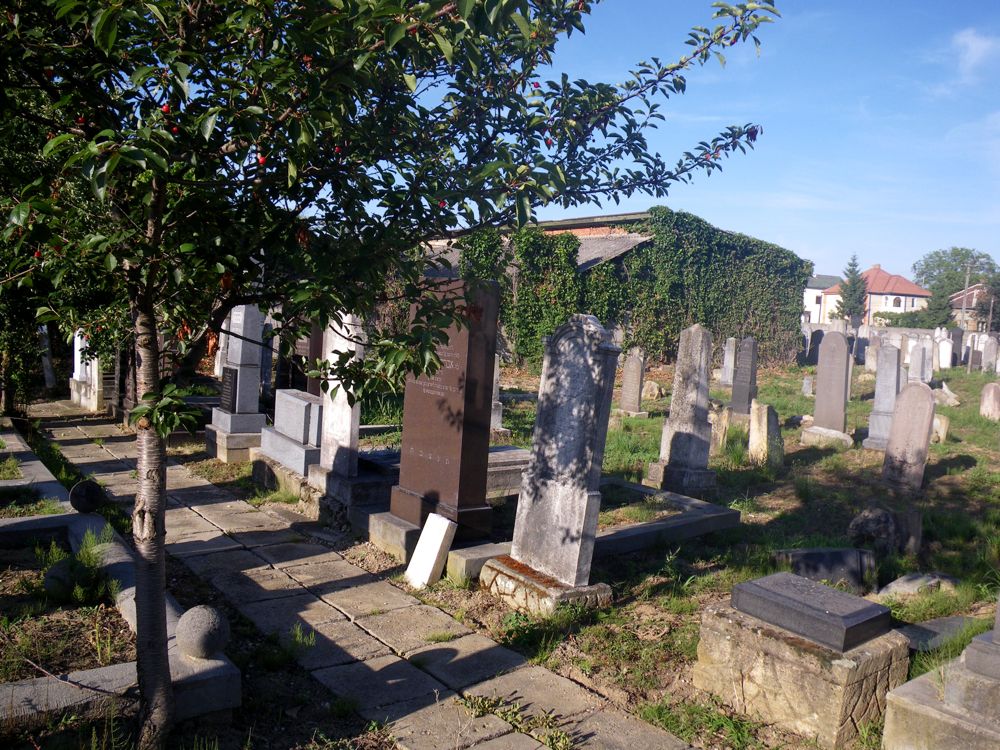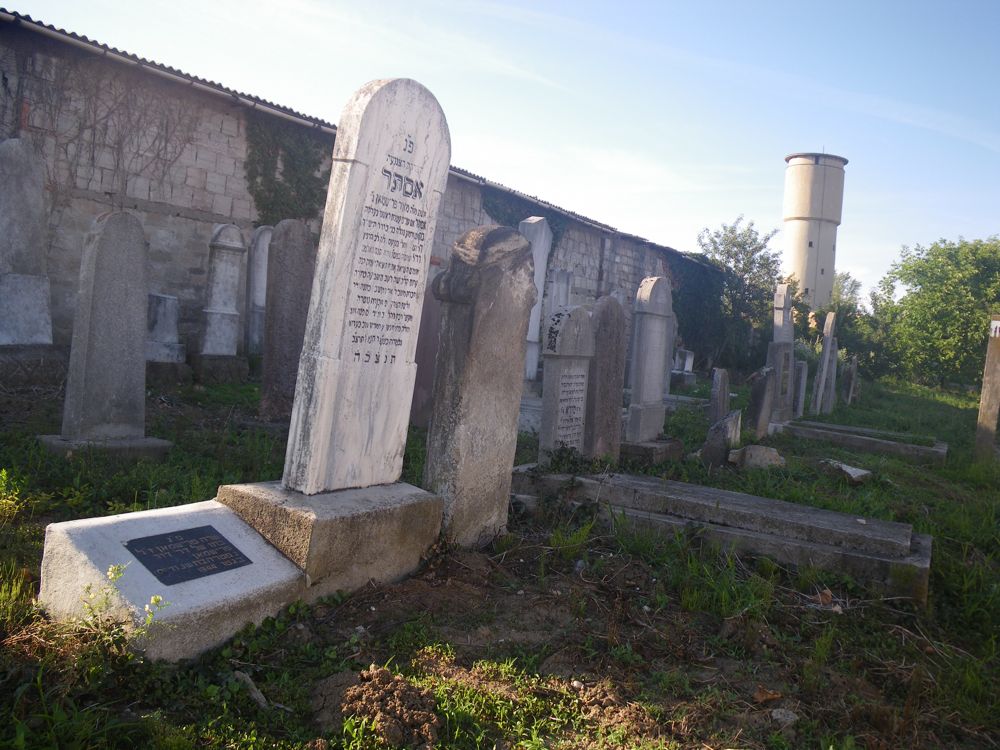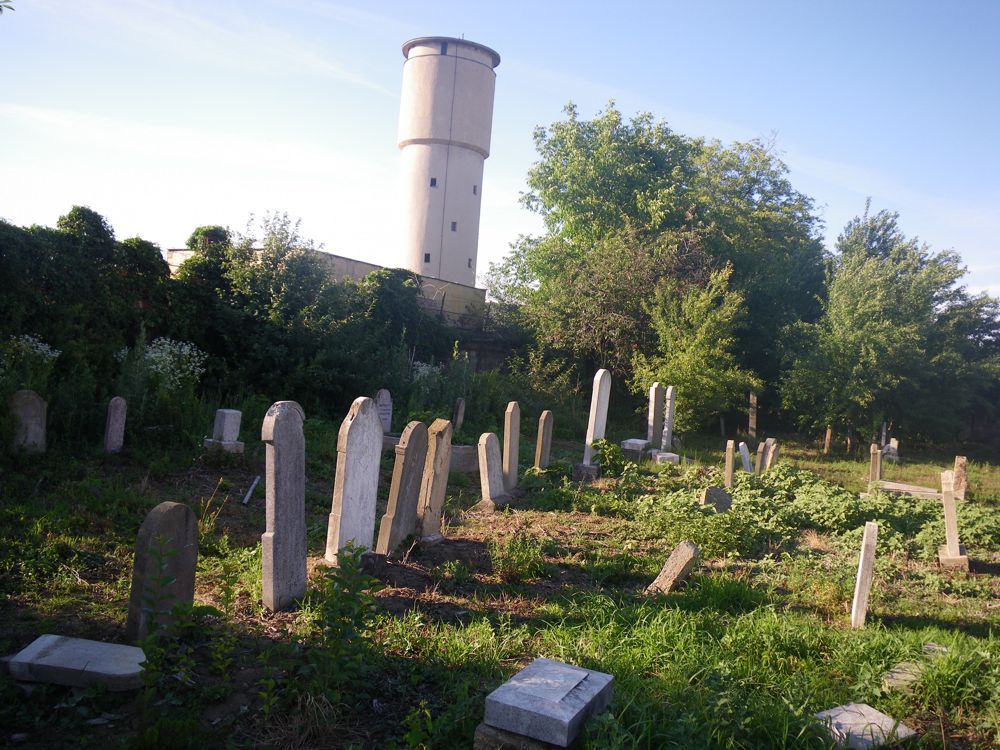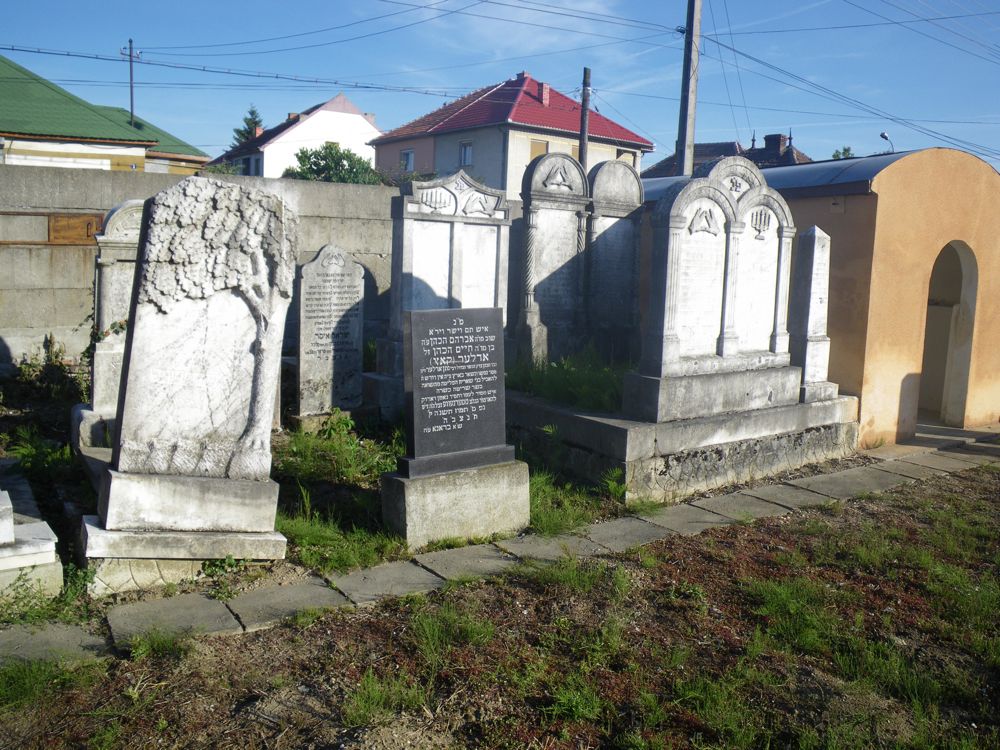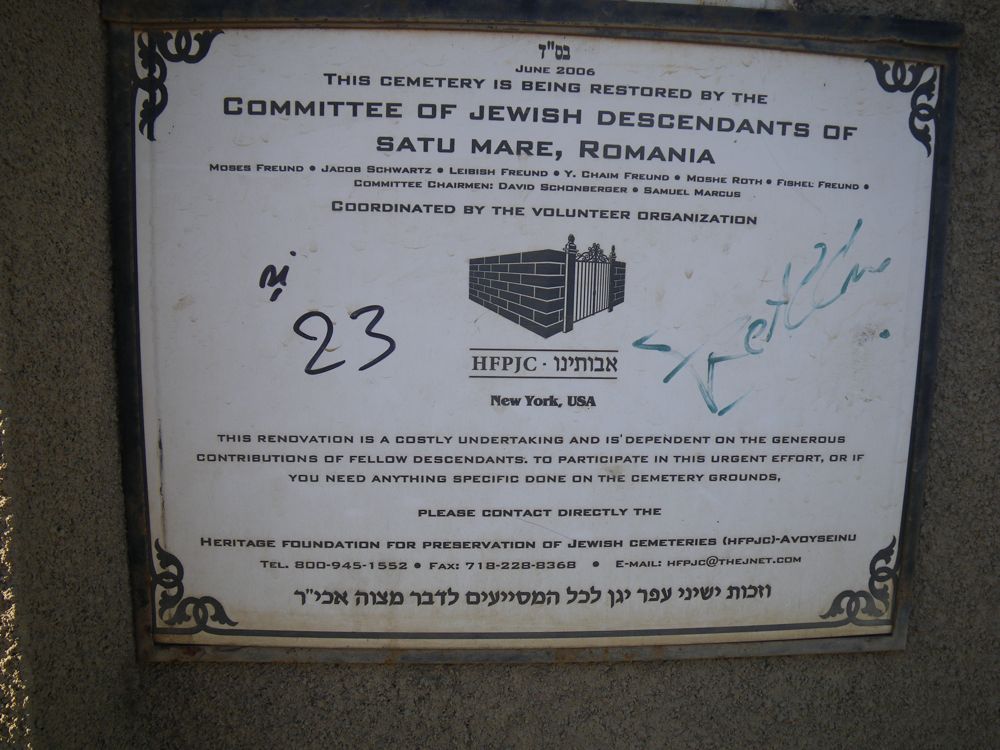 Alternate names: Satu Mare [Rom], Szatmár, Szatmárnémeti [Hun], Szatmár-Németi [Hun], Satmer, סאטמאר [Yid], Sathmar [Ger], Sătmar, Satul Mare, Sakmir, Saktmar. Located at 47°48' N, 22°53' E 34 miles WNW of Baia Mare (Nagybána), near borders of Ukraine and Hungary. Capital of Satu Mare judet (county) in NW Romania. 1900 Jewish population: 5,240.
Alternate names: Satu Mare [Rom], Szatmár, Szatmárnémeti [Hun], Szatmár-Németi [Hun], Satmer, סאטמאר [Yid], Sathmar [Ger], Sătmar, Satul Mare, Sakmir, Saktmar. Located at 47°48' N, 22°53' E 34 miles WNW of Baia Mare (Nagybána), near borders of Ukraine and Hungary. Capital of Satu Mare judet (county) in NW Romania. 1900 Jewish population: 5,240.
Yizkor: Zekhor et Satmar; sefer ha-zikaron shel yehudei Satmar
Database of burials in all Jews cemeterries and photos. [Sept 2012]
REFERENCE: abandoned sites, Gruber, Ruth Ellen. Jewish Heritage Travel: A Guide to East-Central Europe New York: John Wiley & Sons, Inc., 1992. - 201, 224-225
Documentation of the Jewish Cemeteries in Satu Mare: one is Orthodox. The Other is "status quo" [sic]. Burial registry. [Mar 2014]
For Satu Mare judet: Source in Romanian. "Lack of money makes a good part of the Hebrew cemeteries in the county of Satu Mare to lie in ruin. Many places are fenceless ever, with gravestones and tombs destroyed and, last but not least, full of weeds. / Currently, the Jewish Community of Satu Mare records contained a number of 128 cemeteries scattered all over the county. "Certainly the number of jobs and ever Hebrew is much higher, but we managed to identify only 128. Last week I was informed that he might like to be an old cemetery Păuleşti Hebrew, but it's very hard to prove this especially if tombstones are destroyed or missing. Often, the final resting places are confused with the Reformed Hebrew tombstones because the two religions resemble each other very much, "said manager Hebrew cemeteries in Satu Mare, John Bojan. / The oldest sites dating from the seventeenth century ever / According to party, all belonging to the cult of Jewish cemeteries are subordinated to Hebrew Communities Federation in Romania Jewish Community that each county separately. "Years past we found some places centuries-old forever. Oldest Hebrew cemeteries that we have in our records dating from 1600 years and we have discovered in border village Potau in common Medieşu Aurit. Have old cemeteries and Halmeu or Dara, "says Bojan. / "We cemeteries that lie on surfaces of 2 hectares" - John Bojan / Hebrew cemeteries in the county administrator says Satu Mare are some places that stretch forever fairly large surfaces. 'Before 1944, in Satu Mare, there was a highly developed talks to Hebrew. According to documents that have remained in the interwar period can tell you that a quarter of people in Satu Mare were Hebrew. Many of them had a very good financial situation, and allowing the building of places like works of art forever. Unfortunately, many of these tombstones are broken or cracked. We have allocated funds for repair or restoration of graves destroyed by weather or, why not say it, the malevolence of men,' said John Bojan. / Desecration of graves photos of Halmeu Hebrew and Dara, have been posted on the Internet / Although in our county we had cases of desecration as dramatic as in other counties speaker remembers the two cases Halmeu and Dara. "At Halmeu happened about six years ago and to Dara about three years ago. It was about some children, in my opinion, badly brought up that were photographed in the cemeteries, graves and climbed on their pictures posted on the Internet. I was called immediately from the Federation to take action. Since then I have had other cases of desecration, "said Bojan. / Hebrew cemeteries look and cultivated by villagers / Jewish Community of Satu Mare lacks personnel and in terms of providing oversight of the 128 seats ever shown over the years. "We have no money, we have no staff. A large part of the cemetery should be fenced, tombstones would need to be renovated. Although the Federation has a good cooperation with the Ministry of Culture, I think somewhere is a lack of interest. We currently have only a few supervisors who tell you straight, are not paid. In most localities no longer lives so no Hebrew family that cemeteries will disappear gradually. Hebrew cemeteries are common in the show and were cultivated by the inhabitants. In such cases, local governments should intervene but do not. I'm not interested in intervening,' he wanted to clarify John Bojan."
Satu Mare has both an Orthodox and a Neolog cemetery. Alexander Huzau, produced an excellent history with photographs about this Jewish community. Please contact Mr. Huzau for further information and see his photos below. [November 2010]
JOWBR burial listings [July 2011]
Before the Holocaust, Satu Mare was one of the largest Jewish centers in Hungary. Today, about 60 members, mostly elderly, make the congregation but there are active synagogues, Jewish schools, circumcision, etc. There are two big cemeteries - the Orthodox and the "Status Quo Cemetery", still function. Both cemeteries are in satisfactory condition. The Orthodox cemetery has a fence and the gate is locked. Mrs. Schwartzkopf, who lives very close to the cemetery, keeps the keys. Entrance costs some money. It is difficult to move inside the cemetery because of the vegetation. Source: David Holits, 6/16 HaMifras St., Ashdod 77414, Israel; e-mail: This email address is being protected from spambots. You need JavaScript enabled to view it. [date?]
CEMETERY:
SATU MARE I: US Commission No. ROCE-0581 - Satu Mare County, Transylvania
The ORTHODOX cemetery is located in Satu Mare, 9 Mai Street no. 1, 3900, judet Satu Mare, 4748 2253, 278.8 miles NNW of Bucharest , 126 km. NW of Cluj, and 67 km from Baia Mare. Alternate names are Batu Mare/Marefalva/Satmar/Sathmar/Satul Mare/Stammer (Hung.)/Szatmar/Szatmar Nemeti/Szatmarnemeti/.Current town population is over 100,000 with 70 Jews.
- Mayor Horia Anderco, Town Hall of Satu Mare, Str. 25 Octombrie, no. 24, tel. 0040-61-714418
- The Jewish Community of Satu Mare, Decebal Street no. 4A, 3900 Satu Mare, Romania, tel. 0040-61-713703/Comunitatea Evreilor din Satu Mare, Str. Decebal Nr. 4, Satu Mare, (telephone: 74 37 83).
- The Federation of the Jewish Communities of Romania, Strada SF, Sfintu Vineri Str., no 9-11, Sector 3, Bucharest, Romania. (Federatia Comunitatilor Evreiesti din Romania) [Jewish Federation].
- "Dr. Moshe Carmilly" Institute for Hebrew and Jewish History, Universitatii Street, no. 7-9, room 61, 3400 Cluj Napoca, Romania, director: Ladislau Gyemant, This email address is being protected from spambots. You need JavaScript enabled to view it.
- Key holder and caretaker: Bojan Ioan, 9 Mai Street no. 1, Satu Mare
The first Jewish inhabitant was registered in 1696. The Jewish population by census was 1720-1721 was 17, that from 1736 was 13, that from 1787 was 4, that in 1880 was 2,855, that in 1900 census was,5287, and in 1930 was 10,693. The Orthodox Jewish community was founded after the Revolution of 8obelisksn, 1898. In the interwar period there were 26 synagogues and prayer-houses and a Hebrew printing house. In May 1944, the Jews were gathered in the ghetto of Satu Mare and on May 19, 22, 26, 29, 30, 31, and June 1, 18857 Jews were deported to Auschwitz Noteworthy Jewish residents of the community were Orthodox rabbis: Benjamin Zeev Mandelbaum 1848-1897; Yehuda Grunwald 1898-1920; Eliezer David Grunwald 1921-1928; Yoel Teitelbaum 1934-1944. The Status-quo ante community's rabbi was Sandor Jordan between 1903-1932.
The cemetery was established in beginning of the 20th century. Noteworthy individuals buried in the cemetery: 4 Cohanim. The still active cemetery (1997) is not landmarked. The urban flat land, separate but near other cemeteries, has Jewish symbols on wall or gate mark the cemetery. Reached by a public road, access is open with permission. A masonry wall with a gate that locks surrounds the site. Approximate pre-WWII size was 7162 square m. Approximate post-WWII size is 7162 square m. 100-500 stones are visible. 20-100 stones are not in original location. Less than 25% of the stones are toppled or broken. Location of stones removed from the cemetery is unknown. Vegetation overgrowth in the cemetery is not a problem. Water drainage is good all year. No special sections.
The oldest known gravestone dates from beginning of the 20th century. The 20th century marble, granite, limestone, sandstone, concrete, and local stone flat shaped, smoothed and inscribed, and carved relief-decorated, double tombstones, and sculpted monuments have Hebrew and Hungarian inscriptions. Some have other metallic elements., portraits on stones, and metal fences around graves. No known mass graves. The local Jewish community owns the property used for Jewish cemetery only. Adjacent properties are residential. Frequently, organized Jewish group or pilgrimage tours and local residents visit.
The never vandalized cemetery maintenance has been re-erection of stones, patching broken stones, cleaning stones, and clearing vegetation by local non-Jewish residents and Jewish residents of the country in 1998. Current care is regular unpaid caretaker. Within the limits of the cemetery is an empty preburial house.
. Claudia Ursutiu, Pietroasa Str. no. 21, 3400 Cluj Napoca, Romania, tel. 0040-64-151073 visited the site and completed the survey 24 July 2000 using the following documentation:
- Recensamantul din 1880. Transilvania (1880 Transylvania Jewish Population Census.) coord.: Traian Rotariu, Cluj 1997.
- Recensamantul din 1900. (1900 Transylvania Jewish Population Census) coord.: Traian Rotariu, Cluj, 1999
- Recensamantul general al populatiei din 29 decembrie 1930 (The General Census of the Population from December 29, 1930), vol. II, Bucuresti 1938
- Recensamintul general al populatiei din Romania din 7 ianuarie 1992 (The General Census of the Population of Romania from January 7, 1992), vol. I, Bucuresti, 1994
- Zsido Lexicon, ed. by Ujvari Peter, Budapest, 1929
- Carmilly-Weinberger, Moshe. History of the Jews of Transylvania (1623-1944), Bucuresti, 1994, in Romanian
- Izvoare si marturii referitoare la evreii din Romania (Sources and Testimonies on the Jews in Romania), vol. III/1-2, coord. L. Gyemant, L. Benjamin, Bucuresti, Ed. Hasefer, 1999
- Ladislau Gyemant, This email address is being protected from spambots. You need JavaScript enabled to view it., Evreii din Transilvania in epoca emanciparii, 1790-1867 (The Jews of Transylvania in the Age of Emancipation 1790-1867), Bucuresti, ed, Enciclopedica, 2000
- Coriolan Suciu, Dictionar istoric al localitatilor din Transilvania (The Historical Dictionary of Localities in Transylvania), vol. I-II, Bucuresti, 1967
- Otto Mitelstrass, Historisch-Landeskundlicher Atlas von Siebenburgen, Ortsnamenbuch, Heidelberg, 1992
- Microsoft Auto Route Express 1999
They interviewed Bojan Ecaterina and Stein Berger, Satu Mare [January 2003]
CEMETERY UPDATE: US Commission No. ROCE-0582
- The Orthodox cemetery is located in Satu Mare, 9 Mai Street no. 2, 3900, judet Satu Mare, Romania.
- Key holder and caretaker: Schwartzkopf Elizabeta, Zorilor Street no. 9, Satu Mare
- The cemetery was established in beginning of the 19th century. Noteworthy individuals buried in the unlandmarked Orthodox, Hasidic cemetery: large number of Cohanim and four Rabbis ( among them: Grunwald family and wife of Rabbi Teitelbaum).
- The urban flat land, separate but near other cemeteries, has inscriptions on the preburial house. Reached by a public road, access is open with permission. A masonry wall with a gate that locks surrounds the site. Approximate pre- and post-WWII size is 19873 square m. 500-5000 stones are visible. 100-500 stones are not in original location. Less than 25% of the stones are toppled or broken. Gravestones removed from the cemetery are in private hands. Vegetation overgrowth in the cemetery is not a problem. Water drainage is good all year. The cemetery has special sections.
- The cemetery has special sections for men, rabbis, and Cohanim. Gravestones date from the 17th century or the oldest known gravestone dates from first half of the 19th century. The marble, granite, limestone, sandstone, concrete local stone flat shaped, smoothed and inscribed, and carved relief-decorated, double tombstones, and sculpted monuments have Hebrew, Hungarian, and Romanian inscriptions. Some have metallic elements other than bronze or iron. The cemetery has Holocaust memorial. Vegetation overgrowth in the cemetery is a constant problem preventing access.
- The local Jewish community owns the property used for Jewish cemetery only. Adjacent properties are residential. Frequently, private Jewish or non-Jewish visitors stop. The cemetery was vandalized occasionally in the last ten years. Maintenance has been re-erection of stones, patching broken stones, cleaning stones, and clearing vegetation by local non-Jewish residents and Jewish residents of the country in 1999. Current care is regular unpaid caretaker. Within the limits of the cemetery is a preburial house and more than one ohel. The preburial house has a tahara.
- . Claudia Ursutiu, Pietroasa Str. no. 21, 3400 Cluj Napoca, Romania, tel. 0040-64-151073 visited the site and completed the survey 24 July 2000 using the following documentation:
- Recensamantul din 1880. Transilvania (1880 Transylvania Jewish Population Census.) coord.: Traian Rotariu, Cluj 1997.
- Recensamantul din 1900. (1900 Transylvania Jewish Population Census) coord.: Traian Rotariu, Cluj, 1999
- Recensamantul general al populatiei din 29 decembrie 1930 (The General Census of the Population from December 29, 1930), vol. II, Bucuresti 1938
- Recensamintul general al populatiei din Romania din 7 ianuarie 1992 (The General Census of the Population of Romania from January 7, 1992), vol. I, Bucuresti, 1994
- Zsido Lexicon, ed. by Ujvari Peter, Budapest, 1929
- Carmilly-Weinberger, Moshe. History of the Jews of Transylvania (1623-1944), Bucuresti, 1994, in Romanian
- Izvoare si marturii referitoare la evreii din Romania (Sources and Testimonies on the Jews in Romania), vol. III/1-2, coord. L. Gyemant, L. Benjamin, Bucuresti, Ed. Hasefer, 1999
- Ladislau Gyemant, This email address is being protected from spambots. You need JavaScript enabled to view it., Evreii din Transilvania in epoca emanciparii, 1790-1867 (The Jews of Transylvania in the Age of Emancipation 1790-1867), Bucuresti, ed, Enciclopedica, 2000
- Coriolan Suciu, Dictionar istoric al localitatilor din Transilvania (The Historical Dictionary of Localities in Transylvania), vol. I-II, Bucuresti, 1967
- Otto Mitelstrass, Historisch-Landeskundlicher Atlas von Siebenburgen, Ortsnamenbuch, Heidelberg, 1992
- Microsoft Auto Route Express 1999
They interviewed Scwartzkopf Elizabeta and Stein Berger (Chairman of the Jewish Community), Satu Mare [January 2003]
[UPDATE] Photos by Charles Burns [July 2018]
SATU MARE II:
Jewish community using cemetery is Orthodox and Neolog. The urban flat land with no sign is reached by turning directly off public road and crossing apparently private property. A continuous masonry wall and a partial masonry wall surround the cemetery with both a locking gate and no gate. An approximate number gravestone is at least 100-500. Vegetation overgrowth is seasonal but constantly damaging quite a few places. Tombstones are finely smoothed/inscribed stones with Hebrew, Yiddish and/or Hungarian inscription. Cemetery memorializes Holocaust victims. Not used for Jewish cemetery purposes only. Adjacent properties are residential. This email address is being protected from spambots. You need JavaScript enabled to view it., Bethesda MD 20814 visited the site on 9 August 1998 and completed the survey on 1 March 1999.
The photographs below provided by This email address is being protected from spambots. You need JavaScript enabled to view it., were taken from a portfolio he produced with text accompanying the pictures. We are grateful to Mr. Huzau for his efforts and his granting us permission to use his work.
Photos courtesy This email address is being protected from spambots. You need JavaScript enabled to view it. [2009]
[UPDATE] Photos by Charles Burns [July 2018]

